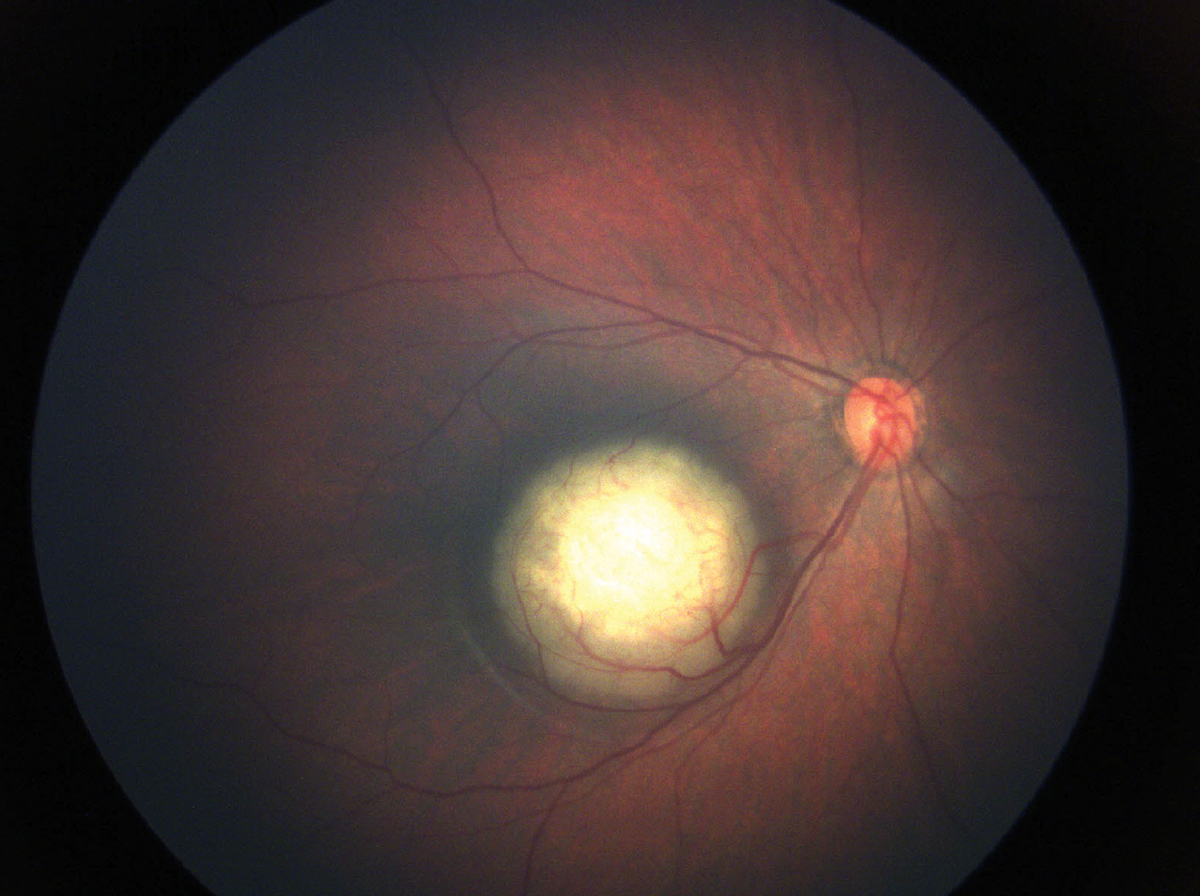 |
| Non-metropolitan residence was significantly associated with more advanced disease at presentation and greater likelihood of enucleation. Non-metropolitan residence was notably associated with an almost ninefold increase in odds of local recurrence after primary globe-sparing therapy. Photo: Julia Canestraro, OD. Click image to enlarge. |
While protocols for globe-sparing therapy with intra-arterial chemotherapy have become common in recent years, there remain no standardized retinoblastoma treatment guidelines. Early detection and management are critical to prevent mortality and morbidity, including vision loss and significant impairments of quality of life, from this devasting pediatric ocular cancer. Researchers based out of the Stanford University School of Medicine evaluated the use of single- and multi-modal retinoblastoma treatments and investigated differences in extraocular disease extent at presentation, receipt of enucleation or chemotherapy, and failure of primary globe-sparing treatment (local recurrence) among US retinoblastoma patients using deidentified data from the National Cancer Database from 2004 to 2016.
Their findings, which were published in Ophthalmology Retina, provided an important perspective on recent changes in retinoblastoma diagnosis, treatment and outcomes. Overall, enucleation rates have steadily decreased over time, while use of globe-sparing therapies, including chemotherapy, and local tumor destruction have increased. Despite this, racial, ethnic, socioeconomic and geographic disparities in retinoblastoma care and outcomes continue to exist, particularly for Hispanic patients, uninsured or underinsured patients and patients in non-metropolitan areas.
The retrospective study analyzed 1,404 retinoblastoma cases in the National Cancer Database, a US-based cancer registry. Primary treatment was classified as enucleation, local tumor destruction, chemotherapy and/or radiation. Multivariable logistic regression models evaluated extraocular disease at presentation, treatment and local recurrence following primary globe-sparing therapy. Metropolitan areas included those with densely settled populations of 50,000 or more and a high degree of social and economic activity and integration, while non-metropolitan areas included non-metropolitan urban areas (urban population of 2,500 or more) or rural areas (completely rural or population less than 2,500).
“Differences in treatment and higher likelihood of recurrence among non-metropolitan patients may indicate barriers in timely access or quality of care,” the researchers wrote in their paper.
Extraocular disease affected 13% of patients at presentation (n=178). All-cause mortality among the entire cohort was 3.1% (n=44) at last follow-up. Those who were non-white, uninsured or had government-funded insurance or with non-metropolitan residence had significantly greater odds of extraocular disease (odds ratio; OR=2.21-3.64 for non-white vs. white non-Hispanic patients, OR=2.05 for Medicaid/Medicare/government-funded and OR=2.95 for non-insured vs. private/commercial insurance and OR=1.80 for non-metropolitan vs. metropolitan residence). Between 2004 and 2016, use of chemotherapy (55% to 73%) and local tumor destruction (17% to 27%) increased.
Enucleations remained overrepresented among Hispanic patients (63% received enucleation in 2016, vs. 35% non-Hispanic patients; OR=1.83, for enucleation among Hispanic vs. white, non-Hispanic patients). Patients with Medicaid/Medicare/government insurance and non-metropolitan residence also had higher odds of enucleation and non-metropolitan patients had higher odds of local recurrence after primary globe-sparing therapy.
“Collectively, these findings demonstrate disparities in retinoblastoma presentation, treatment, and outcomes and suggest the need for improvement in the care of potentially vulnerable populations,” the team noted. “These patients may experience increased barriers to care including disparities in health literacy, access to care, cultural factors and/or language barriers. Further work is necessary to ensure timely diagnosis and access to standard-of-care treatment and follow-up in order to improve retinoblastoma outcomes for all patients.”
| Click here for journal source. |
SO JY, Pershing S, Pollom EL, et al. Disparities in US retinoblastoma presentation, management and local recurrence in the National Cancer Database, 2004-2016. Ophthlamol Retina. November 11, 2024. [Epub ahead of print]. |


